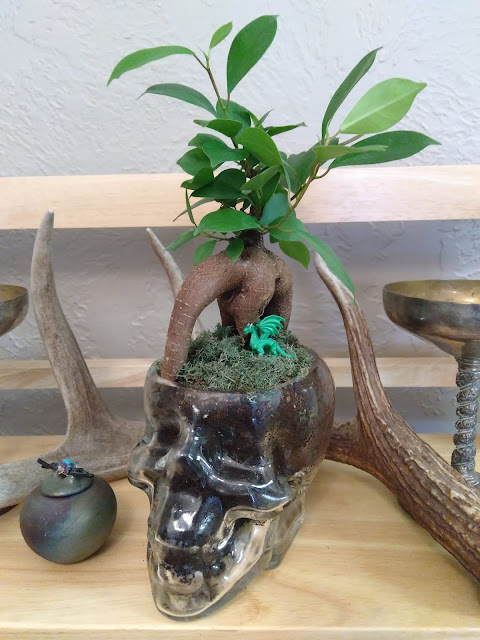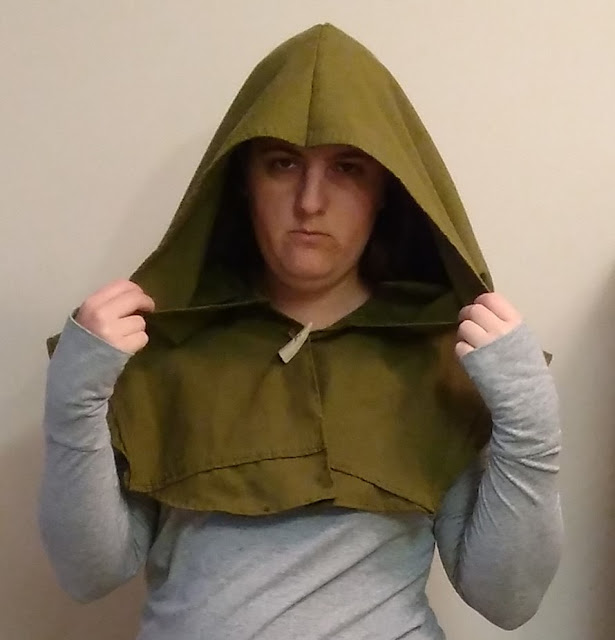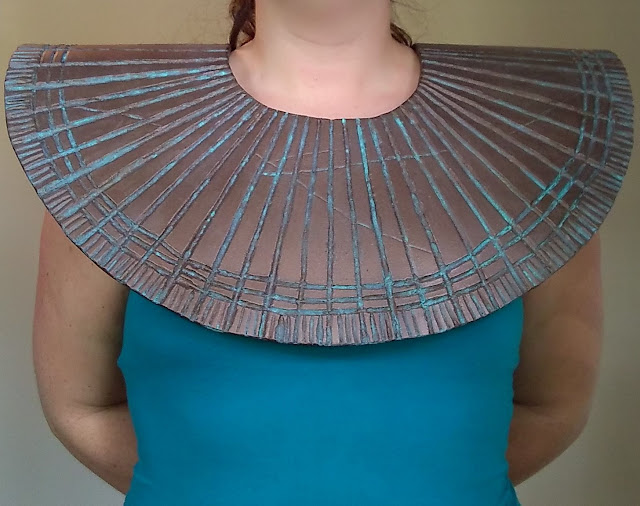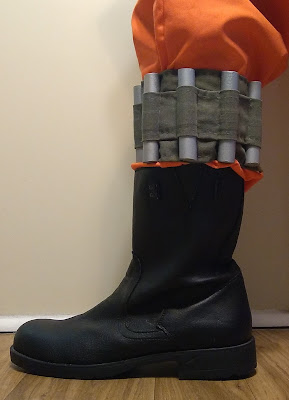How to make a wizard's garden
The fun thing about urban fantasy is that the lines are easily blurred of creating something that passes as trendy but also brings a bit of magic into your life. And with a trip to the your nearest big box hardware store finding an amazing but low-maintenance houseplant that would fit that aesthetic is not difficult at all, and are often pretty affordable. So if your home or arcane workshop is in need of a little extra flair and mystery, here's one way to add those ingredients.
Materials
-Glass skull container
-Bonsai or succulent plant
-Pebbles
-Potting soil (specific to container or indoor gardening)
-Mythical animal figurines
-Moss (optional)
1. Gather the materials
Probably the most difficult material to find for this is going to be the glass skull jar. You can purchase these online, but these and any other skull-themed containers are pretty common around Halloween. I found this one in a craft store last Halloween, on sale for about $4.
Getting the plant is a matter of picking a favorite from a gardening department or nursery. I liked the look of this ficus bonsai, which I think has that feel of age. And the "limbs" of the trunks are pretty interesting, making it look a bit more like an animal or sentient. I would think some of other traditional go-to plants for houseplants (like succulents and ferns) would also work as well. Just be sure the plant is going to be small enough to fit in your container. This basic bonsai was $10 from a big hardware store, complete with the blue ceramic pot. Buying extra potting soil from the same place is also smart, because generally in any re-potting you need to add some new soil. It's fairly cheap, and you can even pick mixes that are formulated for indoor and container gardening.
The rest of this can be found in odd places. The bag of decorative pebbles are common enough in dollar stores, and you can use basic "river rocks" to decorative glass pebbles. Or you can do something wild and go outside to collect some. To get the dragon figurine, I bought a pack of tiny mythical animal figurines from a craft store (usually around the diorama supplies). But you could easily use any small toy from a variety of sources.
2. Prepare the skull jar
First clean out the jar with soap and water, thoroughly rinsing and drying. Then add a layer or two of pebbles to the bottom of the jar. This is generally more important with plants that need drier conditions (like succulents and cacti), but this layer gives a space for where the excess water seeps out of a pot without losing a lot of soil. Less useful for this jar since it doesn't have a drainage hole and has a plant that needs more water, but it's a habit for me and I didn't see where it would do any harm. Also for a transparent jar it gives you an opportunity to show some decorative details with the kind of pebbles. Add some potting soil over the top of the pebbles, but do not fill more than one third the depth of the jar.
3. Transfer the plant to the skull jar
I'm not much of a gardener, but this is a pretty standard maneuver practically anyone can master. Gripping the base of the plant with one hand and the pot in the other, gently pull the plant up. There might be some resistance from the roots, but don't worry too much about breaking the roots. Once out, break the root base out of the shape it's holding. You can also trim down the roots some if they're really extensive. Transfer the plant to the skull jar.
4. Add extra soil
Once you have the plant positioned in the jar, start spooning extra potting soil in and around the plant. Pack it in, but not to solidly. You still want there to be some small spaces for air and water flow. You might want to add a little water during the process to be sure your using enough soil and ultimately get a firm placement.
5. Finishing touches
Since this bonsai came with the moss as a mulch to keep out weeds and pests, I ended up reusing that moss around the top of the soil. You could also just use extra pebbles or decorative sand to give it a finished look. Add a little more water, and then place your magical animal figurine. I favored the tiny dragon, thinking a magical plant would be likely to harbor young magical creatures. I'd think fairies, gnomes, bowtruckles, or similar would also fit will.
And there you have it, a neat houseplant with a hint of the magical, that would be just at home in a witch's lair or an ordinary living room. Be sure for whatever plant you pick to be knowledgeable about their sun and watering preferences, and just keep in mind you might need to repot the plant from time to time to keep it healthy Otherwise, good luck and keep gardening!
Materials
-Glass skull container
-Bonsai or succulent plant
-Pebbles
-Potting soil (specific to container or indoor gardening)
-Mythical animal figurines
-Moss (optional)
1. Gather the materials
Probably the most difficult material to find for this is going to be the glass skull jar. You can purchase these online, but these and any other skull-themed containers are pretty common around Halloween. I found this one in a craft store last Halloween, on sale for about $4.
Getting the plant is a matter of picking a favorite from a gardening department or nursery. I liked the look of this ficus bonsai, which I think has that feel of age. And the "limbs" of the trunks are pretty interesting, making it look a bit more like an animal or sentient. I would think some of other traditional go-to plants for houseplants (like succulents and ferns) would also work as well. Just be sure the plant is going to be small enough to fit in your container. This basic bonsai was $10 from a big hardware store, complete with the blue ceramic pot. Buying extra potting soil from the same place is also smart, because generally in any re-potting you need to add some new soil. It's fairly cheap, and you can even pick mixes that are formulated for indoor and container gardening.
The rest of this can be found in odd places. The bag of decorative pebbles are common enough in dollar stores, and you can use basic "river rocks" to decorative glass pebbles. Or you can do something wild and go outside to collect some. To get the dragon figurine, I bought a pack of tiny mythical animal figurines from a craft store (usually around the diorama supplies). But you could easily use any small toy from a variety of sources.
2. Prepare the skull jar
First clean out the jar with soap and water, thoroughly rinsing and drying. Then add a layer or two of pebbles to the bottom of the jar. This is generally more important with plants that need drier conditions (like succulents and cacti), but this layer gives a space for where the excess water seeps out of a pot without losing a lot of soil. Less useful for this jar since it doesn't have a drainage hole and has a plant that needs more water, but it's a habit for me and I didn't see where it would do any harm. Also for a transparent jar it gives you an opportunity to show some decorative details with the kind of pebbles. Add some potting soil over the top of the pebbles, but do not fill more than one third the depth of the jar.
3. Transfer the plant to the skull jar
I'm not much of a gardener, but this is a pretty standard maneuver practically anyone can master. Gripping the base of the plant with one hand and the pot in the other, gently pull the plant up. There might be some resistance from the roots, but don't worry too much about breaking the roots. Once out, break the root base out of the shape it's holding. You can also trim down the roots some if they're really extensive. Transfer the plant to the skull jar.
4. Add extra soil
Once you have the plant positioned in the jar, start spooning extra potting soil in and around the plant. Pack it in, but not to solidly. You still want there to be some small spaces for air and water flow. You might want to add a little water during the process to be sure your using enough soil and ultimately get a firm placement.
5. Finishing touches
Since this bonsai came with the moss as a mulch to keep out weeds and pests, I ended up reusing that moss around the top of the soil. You could also just use extra pebbles or decorative sand to give it a finished look. Add a little more water, and then place your magical animal figurine. I favored the tiny dragon, thinking a magical plant would be likely to harbor young magical creatures. I'd think fairies, gnomes, bowtruckles, or similar would also fit will.
And there you have it, a neat houseplant with a hint of the magical, that would be just at home in a witch's lair or an ordinary living room. Be sure for whatever plant you pick to be knowledgeable about their sun and watering preferences, and just keep in mind you might need to repot the plant from time to time to keep it healthy Otherwise, good luck and keep gardening!










Comments
Post a Comment